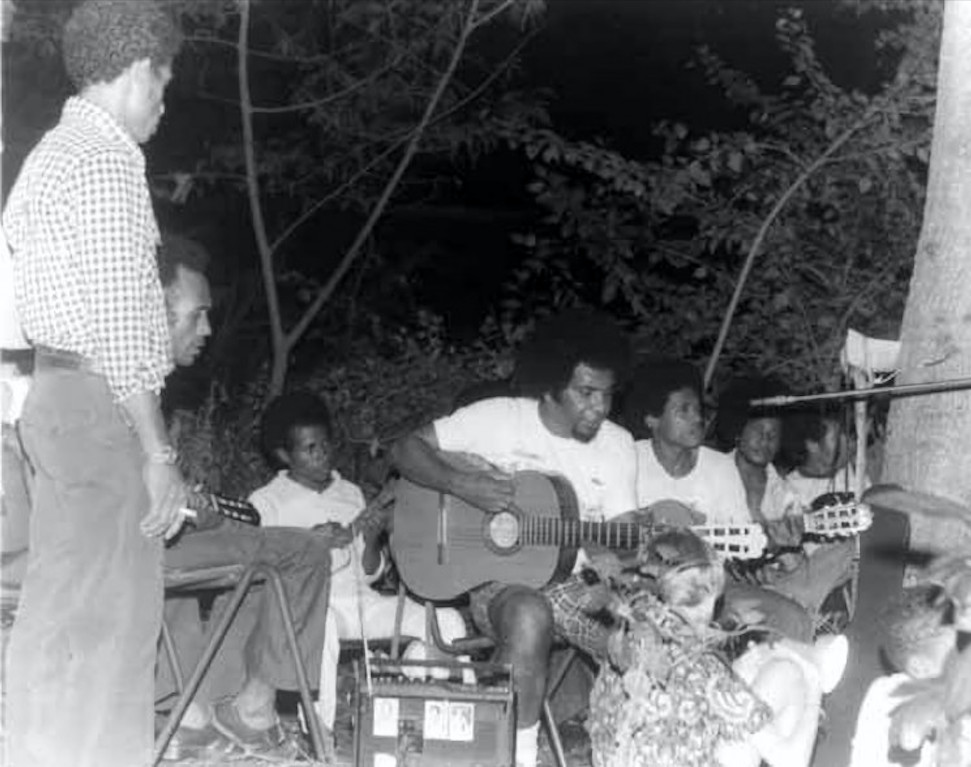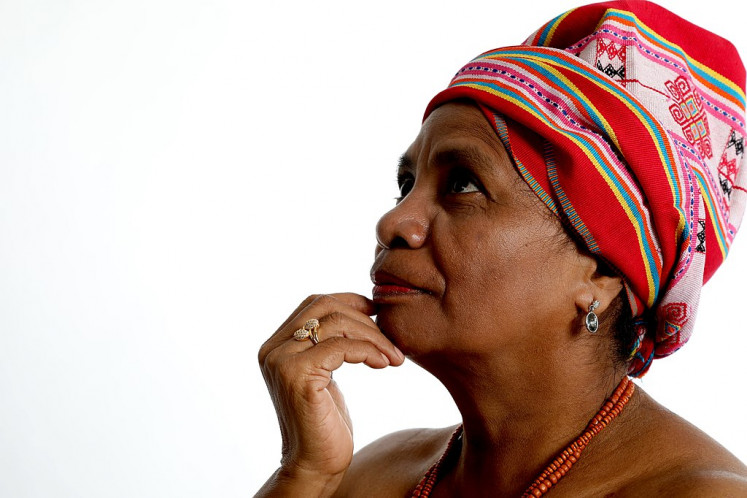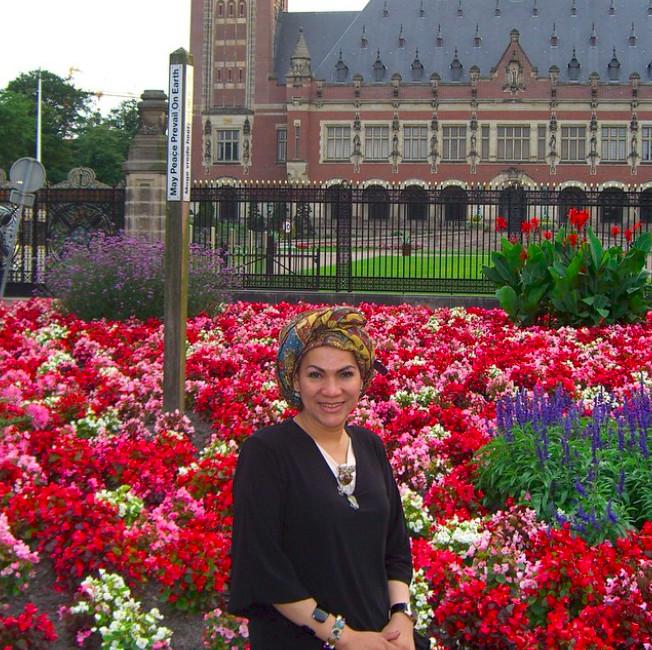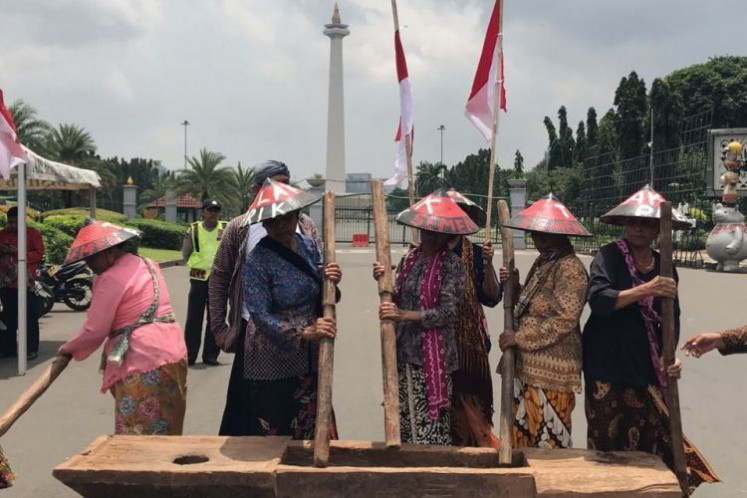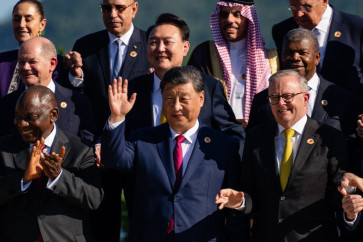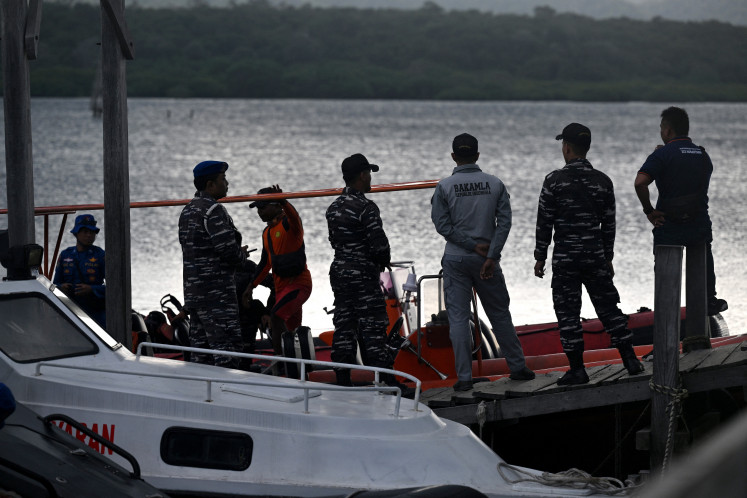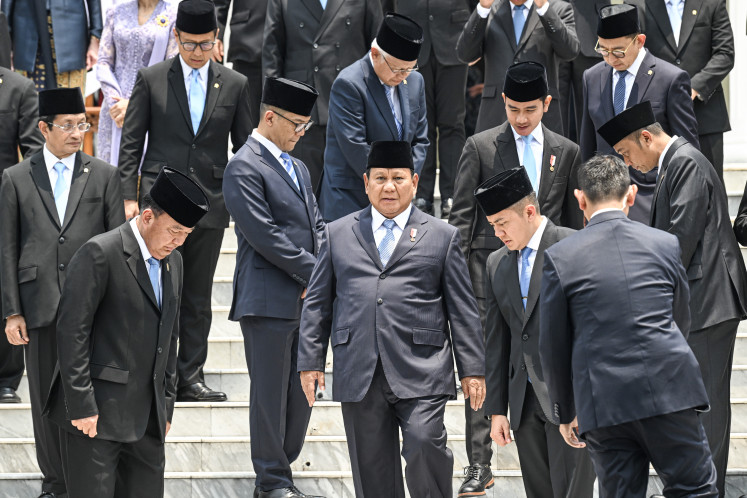Popular Reads
Top Results
Can't find what you're looking for?
View all search resultsPopular Reads
Top Results
Can't find what you're looking for?
View all search results'Twenties': 20 Indonesian heroes you should know but probably haven't heard of
‘Twenties’ is a new column in which we give our top 20 list of anything and everything of interest, from food and history to pop culture and lifestyle — and more.
Change text size
Gift Premium Articles
to Anyone
‘Twenties' is a new column in which we give our top 20 list of anything and everything of interest, from food and history to pop culture and lifestyle — and more.
Indonesia’s long and complex history has left plenty of room for heroes. These are men and women who stood up for what’s right in times of strife and fought for their convictions — even if they had to pay with their lives. Perhaps because of this, some of their names might not appear in our history books and their bodies were not laid to rest at the Hero's Cemetery in Kalibata, Jakarta.
But without them, the story of Indonesia would be very different — and likely more grim — from what we know today.
1. Mama Yosepha Alomang
A midwife by trade, Mama Yosepha spent decades organizing protests against industrial-scale mining in West Papua, decrying the environmental damage and chronic inequality it brought. She formed cooperatives to help native tribes, held non-violent rallies and worked to free other Papuan campaigners imprisoned for their convictions.
A true powerhouse.
2. YB Mangunwijaya
Perhaps best known for writing The Weaverbirds (1981), one of the great novels of modern Indonesian literature, Romo Mangun — as he’s affectionately known — was also a champion for the poor. During the late Soeharto era, he was a regular presence among villages facing forced evictions and land conflicts, including in Kedung Ombo in Central Java and Gunungkidul, Yogyakarta.
But his masterpiece lies in Kali Code, Yogyakarta. As its architect, he redeveloped the previously derelict slum and turned it into a humane, beautiful dwelling for the city’s underclass.
3. Butet Manurung
Piqued by the inequality and violence suffered by forest tribes, Manurung embarked on a journey that would turn her into a global sensation. The Sokola Institute, her organization, has brought education and alternative schooling to tribes living in remote places, often threatened by illegal logging and environmental ruin. Recently, her work garnered unusual acclaim — she was chosen as one of Barbie’s Global Role Models, with her likeness turned into the namesake doll.
4. Arnold Ap
Anthropologist, musician and author, he traversed the countryside of West Papua and gathered every piece of information he could on his home's traditions and culture. All this was happening when the New Order regime worked to actively suppress expressions of West Papuan identity and its culture was threatened with oblivion. With his group Mambesak, he performed regularly and kept West Papuan culture at the forefront of his people’s memory.
He paid for it with his life. Accused of harboring secessionist sympathies, he was arrested and killed in 1984.
5. Rohana Kudus
A pioneer all her life. Rohana Kudus was Indonesia’s first female journalist and founded Sunting Melayu, the country’s first women-led newspaper, in 1912. Her vicious essays and reporting was a constant thorn in the side of the colonial Dutch government at a time when women weren’t even expected to be educated, let alone critical. For good measure, she also played a key role in the independence struggle — reportedly smuggling weapons for Indonesian freedom fighters and organizing soup kitchens. Her life should be made into a movie.
6. Hoegeng Iman Santoso
Such was the regard held for him, that even today his name still stands as a byword for honesty. In 1968, he was appointed as the head of the country’s police and became known for his crackdown on corruption. Famously, he had a frosty relationship with the political and business establishment of the time, including with Indonesia’s dictator, Soeharto.
He was controversially removed from his post in 1971 after allegedly uncovering an imported vehicle scandal that would have dragged prominent politicians to court. As the story goes, when he left office, he returned all the facilities the police force gave him, returning home with civilian clothes and a rusty bicycle.
7. Mama Aleta Baun
For two decades, environmentalist Mama Aleta fought back against industrial marble mining, which has devastated the mountains sacred to her people in Mollo, East Nusa Tenggara. But perhaps sick of stalemates and violence, she took a drastic step. In 2006, she and hundreds of women organized a sit-in in front of the mines, weaving traditional fabric and blocking the mine’s entrance. Their non-violence tactics worked. Mining stopped a year later and was shut down permanently in 2010.
Not for turning: Aleta Baun, an environmental activist based in East Nusa Tenggara, famously fought back against marble mining on her people's sacred mountains in Mollo. (Wikimedia Commons/Eva Tobing) (Wikimedia Commons/Eva Tobing)8. Ginan Koesmayadi
A hero who served his community, Ginan kicked a crippling drug addiction and took his HIV-positive diagnosis in his stride. In 2003, he formed rehab center Rumah Cemara, helping others in a similar position to his past and campaigning to rehabilitate drug addicts, help the homeless, and erase the stigma against HIV-positive people. After his unexpected death due to illness in 2018, Rumah Cemara continued his legacy.
9. Marianne Katoppo
Through her writing, Katoppo reeled women in from the margins of academic discourse and brought God closer to the forefront of feminism. Her landmark work, Compassionate and Free, was released in 1979 and quickly became one of the country’s most lauded philosophical works. In it, the theologian offered a distinctly Asian lens on feminism, pushing for equality and emancipation. She was also a prominent novelist, winning the South East Asia Write Award for her 1982 book, Raumanen.
10. Yap Tham Hien
Yap famously stated you should only work with him if you wanted “to present your truth, not win”. The human rights lawyer took on some of the country’s most obscure and unwinnable legal cases during Soekarno and Soeharto’s reign. He defended political prisoners, black sheeps of the regime and the urban poor alike, all victims of greedy lawmakers and businessmen.
Famously stubborn and incorruptible, Yap’s convictions landed him in hot water several times — most notoriously in 1974, when he was accused of supporting the Malari student protests and threatened with imprisonment.
11. Dorce Gamalama
For over three decades, Dorce enthralled Indonesia with her comedic wit, melodious singing and charismatic TV shows. A trans woman in a conservative country, her stint as one of Indonesia’s most visible entertainers made her an icon for trans people and anyone looking to express themselves on a bigger stage. Speaking after her recent passing in February, acclaimed director Joko Anwar said Dorce “taught us about pride. She wasn’t only brave. She was a hero."
Role model: For decades, 'Bunda' Dorce Gamalama was Indonesia's most visible transgender entertainer. She broke barriers, and her presence was a powerful message on diversity. (Instagram/Courtesy of Dorce Gamalama) (Instagram/Courtesy of Dorce Gamalama)12. Harry Roesli
The eccentric and boisterous artist has earned his place among the country’s cultural pantheons. With his loose collective, the Gang of Harry Roesli, he created some of the most challenging music of the 1970s, fusing jazz, funk and blues while singing sardonic political criticism. While still creating music, he then turned his focus to theater, forming the controversial troupe Teater Ken Arok, known for its biting political satire and bombastic, dangerous performances. His artistic work got him arrested and intimidated many times, but he is nothing if not stubborn. A true juggernaut.
13. Dewi Sartika
Dewi Sartika opened her first school for women when she was only 20 years old. This was back in 1904, long before Indonesia had its national awakening and deep into the heart of colonialism and oppression. By 1912, she had started nine schools around West Java and eight years later, these women’s schools had sprung up in every major city in the province. A trailblazer for women’s education in Indonesia and a hero more people should know.
14. Dono
Along with Indro and Kasino, Wahyu Sardono — affectionately known as Dono — was part of Warkop, arguably Indonesia’s most famous comedic trio. Their brand of raunchy, off-color humor suffused with social satire and political undertones ruled the country’s silver screens in the 1980s.
But way before he hit the limelight, Dono was a steadfast student activist, drawing political caricatures, researching inequality and taking to the streets for rallies such as the 1974 Malari protests. He was also at the frontlines of the 1998 Reform protests, distributing food to student activists and whipping up the crowd to a frenzy with his speeches.
15. Keumalahayati
Bafflingly, her life hasn’t been turned into a blockbuster movie. Keumalahayati was a noblewoman who lived in the Sultanate of Aceh in the 16th century. When her husband was killed in an incursion by the Portuguese navy, she came up with a brilliant idea: create an army of 2,000 women, all widows of fallen Acehnese soldiers. Inong balee, her legendary army, defended Aceh from foreign intervention in the next decades.
In 1599, they defeated an army led by Cornelis de Houtman, the Dutch colonizer who founded the trade route from Europe to the Indonesian archipelago. How was the battle settled? A one-on-one duel in which Keumalahayati personally slew De Houtman, of course.
16. Rosihan Anwar
He was the man who wrote Indonesia. Anwar’s journalistic career spanned six decades, from the tail end of colonialism, the independence struggle and all the way to the early years of the Reform Era. His reportage on high politics, independence and social issues landed him in hot water several times — most notably when his newspaper, Pedoman, was forcibly closed by the Sukarno’s government in 1961, allegedly after ruffling too many governmental feathers.
17. Kartini Kendeng
For years, the people of the Kendeng mountains in Central Java have opposed the possible opening of a cement factory and karst mining in their area, blockading the mine’s entrance and organizing non-violent sit-ins. When the plans went ahead despite the villagers’ legal victory at the Supreme Court in 2016, they took drastic measures. Dubbed the Kartini of Kendeng, nine women farmers from the mountains froze their feet in cement in a symbolic protest in front of the presidential palace. Their protests brought the effects of untamed development in Indonesia into sharp focus.
Stubborn: The nine so-called Kartini of Kendeng protested against karst mining in their home village by encasing their feet in cement in front of the Presidential Palace, 2016. (Kompas/Dhyta Caturani) (Kompas/Dhyta Caturani)18. Pater Piet Petu
Arguably one of Indonesia’s most important anthropologists and curators, Piet Petu immortalized facets of Eastern Indonesian culture that would otherwise have been lost to history. He went on lengthy research trips to the heartlands of Flores — especially in Sikka, his beloved homeland in the island’s center — and documented anything from visual art and harvest rituals to folklore and ancestral beliefs. Before his death, he formed and curated the Bikon Blewut Museum, still one of the best caretakers of East Indonesian culture working today.
19. Suwarsih Djojopuspito
A nearly-forgotten titan of Indonesian literature. Suwarsih’s boldly feminist novels set her apart in a time of conservatism and political repression, and landed her time and again into censure. Her debut novel, Marjanah, was refused by colonial-era publishers for its controversially feminist plot, including a fiery ending in which the protagonist leaves her disappointing spouse to be with her lover.
But her true masterpiece was Manusia Bebas (Free People), published in 1940 under a pseudonym to escape Dutch colonial censors. It was notable for featuring two women protagonists, both deeply involved in the fight for Indonesian independence, and pushed her into the forefront of the Indonesian intellectual scene.
20. Loit Botor Dingit
A paramount chief of the Bentian people in East Kalimantan, Botor Dingit spent his life organizing forest tribes and highlighting the injustices they were dealt due to incursions by timber corporations. Throughout the 1990s, he assisted communities whose ancestral lands were ruined by bulldozers and illegal logging, and stood in the line of fire when the corporations’ bosses — mostly cronies of the president Suharto — intimidated him. The government eventually relented, granting indigenous communities more say in managing these forests and protecting their biodiversity.

